While there are magnificent and amazing things about Japan, I find that after our recent trip there, the things I keep thinking about are the small, little things that somehow add up to a huge cultural difference.
1. Plastic food. People in Japan are obsessed with plastic food. Many, many restaurants display plastic models of their dishes in the front window. Here in the States, you know never to eat anywhere that does this or even has a menu with photos, but it’s not true in Japan. There are also plastic food stores. Because you never know when you might need some.
2. Payment rituals. When you buy something in a store you are supposed to place your credit card, using two hands, onto a small tray by the register. The clerk then picks it up and bows and you’re supposed to bow back. It’s then placed back in the tray (with two hands) for you to pick up. If you pay with cash, the same ritual ensues.
3. Shopping requires assistance. Many stores have one item of each type on display. If you would like to buy it, a sales clerk must get you another one. It’s not a problem though since there are sales people everywhere, swarming in to offer assistance. You do have to be sure to examine the item that you are given so that you can make sure it is not defective or different from the item you indicated you wanted.
4. Washcloths everywhere. Every time you dine in Japan, you are first presented with a white, warm, wet washcloth. In many instances you do not have a napkin and keep this for the entire meal. Even when you ride the bullet train you are given a packaged wet wipe even if you do not purchase food.
5. Fear of shoes. Don’t even think about coming into a restaurant, temple, shrine, or inn with your shoes on. And when you take your shoes off to enter, you must do so very carefully. Your shoes must never, ever touch the wooden floor (or god forbid, tatami mat) that signals the beginning of the premises and your shoeless feet must never, ever touch the tile, stone, or flooring you entered on. All of this leads to a very complex balancing act where you must remove a shoe and get that foot onto the wooden floor or mat and then remove the other shoe and then get that foot up too, without losing your balance and touching the actual contaminated floor. If you make a mistake or forget and attempt to enter with your shoes on, the usually reticent Japanese will shout at you. We even had some hotel employees remove their shoes before coming into our room to deliver laundry or ice.
6. Bathroom insanity. High tech Japanese toilets with music, sound effects, heated seats, water sprays and automatic flushes can be found everywhere, even in
train stations. Most of these toilets automatically begin making noise as soon as you sit on them, to disguise any sounds you might make. When you go to a restaurant or ryokan (traditional inn), there are toilet slippers you are expected to use in the bathrooms (since you have removed your shoes upon entry to the premises). These are plastic leatherette slippers – the kind your great grandma used to wear. And yet public bathrooms have no soap, no towels, and no hand dryers. Japanese women carry small washcloth sized towels (usually in crazy patterns) in their purses to dry their hands, but no one is using soap or hand sanitizer. Ever. Yet they are super concerned about your feet. There are many, many shops that just sell these small, brightly colored bathroom towels.
7. Get used to standing. Because we are fat, lazy, loud Americans, we are used to being able to plant our butts on a bench or chair often. In Japan there are almost no benches. We visited many parks and gardens where there was not a bench in sight. We had lunch one day at a busy department store food hall. They have no tables or benches. We were lucky to discover a few chairs in a corner so we could sit and eat. There are notes on the umbrella stands (see #8) warning people not to sit on them – because they are the ONLY possible place you might consider sitting.
8. Umbrella fear. When it rains in Japan, everyone carries a full-size umbrella. When the rain stops, they walk with it like a fun cane. No one – not a single person –
carries a fold up umbrella. Stores, restaurants, temples, and shrines have umbrella stands (some sporting signs warning people not to sit on them, because, as we saw, they collapse when a foolish tourist thinks they are a place to sit). They do not want your scary umbrella inside their restaurant or shop, even if it is folded up.
9. Overt politeness. While we certainly encountered a few people who were not friendly or were stone-faced and impenetrable, for the most part, the people we encountered were friendly and unfailingly courteous. I have never been anywhere before where everyone was so very formal and so very careful with their manners. It made me feel like a boorish American. We had a driver pick us up on time and nearly scrape the floor bowing as he apologized over and over for keeping us waiting. People who work in restaurants and shops are friendly and helpful and thank you profusely over and over while bowing many times. Even the gentlemen (and they were gentlemen) who worked in the ticket booths in the subways were professional, courteous, helpful and polite (I couldn’t help but compare them to subway workers in NYC – but there is no comparison). The train conductors who came through the cars to take your tickets would get to the end of the car, turn, and bow to the car before exiting.
10. Wrapping is an art. When you buy something in a shop in the States, it’s usually chucked into a plastic bag and handed to you. When you buy something in Japan, plan to stand there for hours and wait while it is packaged. Price tags are removed. Items are wrapped in tissue paper, foam paper, bubble wrap and usually boxed and then wrapped in wrapping paper. I even had one item wrapped in tissue, foam, bubble wrap, then boxed the then wrapped in bubble wrap again. Your item is then placed in a bag and the bag is sealed shut with a sticker or colorful tape. If it is raining, the bag is then covered with a special rain cover. Some stores provide seating so you can sit and wait while you purchase is packaged, because it is a lengthy and complex process.
11. Buttoned up, until they’re not. When you walk through a train station during rush hour, everyone around you is wearing black, blue, and white. There is no other color on anybody in sight. The women are very buttoned up in high necked blouses and prim suits and dresses. You could hear a pin drop in the station even as the entire place is crawling with people. It’s like being in the middle of worker ants. Each is steadfastedly and silently intent on its own journey. No one speaks. No one laughs. No one makes any noise. The only sound is the rhythmic movement of feet. It’s eerie. But on the weekend these same people don crazy costumes and bright gaudy, weird clothes to go out and about. It’s almost like they have to rebel on the weekends against the very serious and straight-laced working culture .
You can follow any comment to this entry through the RSS 2.0 Both comments and pings are currently closed.

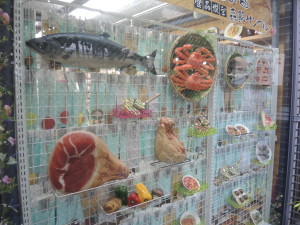
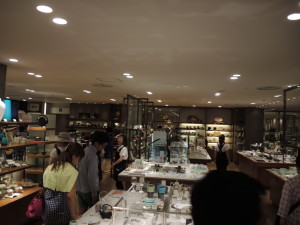
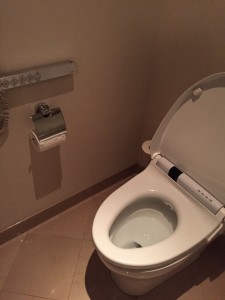
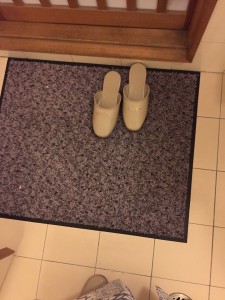
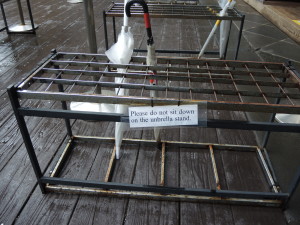
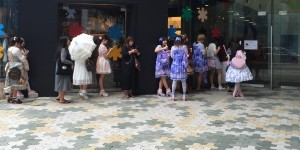







Fascinating stuff! Sounds like using the restroom is a real production there. And I wish some of their friendly and courteous manners would rub off on Americans.
Sounds fascinating . The package wrapping is defiantly something that I would appreciate.
I have ALWAYS wanted to visit Japan. 🙂
Do you think the politeness is genuine or more like a ritual?
I like the idea of warm washcloths. Air France used to hand them out to all passengers right before breakfast when flying from the US to France.
It is a nice touch but kind of odd because you can’t put it on your lap like a napkin, so you’re never sure where it should go.
It is very deeply ingrained in their society. It’s automatic.
It is very unique, but when you are doing a lot of shopping you find yourself doing a lot of waiting! Fortunately I have a husband who stands and waits while I go to the next shop!
Yes, when we landed in DC, I was immediately struck by how rude everyone seemed. It is very nice, but it does not encourage self-expression so I think you would have to give that up. It was definitely interesting to experience it.
When we were there in ’99, the young were dyeing their hair brown to rebel. (Brown?) Some of the conformity is charming, but it can feel oppressive, too.
Also, given that we always try to blend in when we travel, it was disconcerting to be immediately recognizable as foreigners.
So fascinating! I find it really funny about the toilets…or brilliant. And it’s funny, I have noticed Asian women in U.S. bathrooms all having their own cloths with them…I now know where that comes from.
Yes, with my blue eyes and blond hair I felt like a spectacle. We are also taller, wider, and louder than almost anyone there. It was most noticeable in Tokyo. There are lots of foreigner tourists in Kyoto. There were lots of women with brown hair or even some reddish streaks (gasp), so that trend is continuing.
This is so very interesting. I’ve never visited Japan, but when we were in California and later, Nevada, one year, we encountered some Japanese tourists. They weren’t our definition of polite when waiting to get into attractions, they were very pushy. We were told this is normal in Japan, particularly in the crowded cites. I definitely would need my hand sanitizer – LOL. My niece just visited Japan on a business trip, I;ll ask if she experienced many of the same things.
We encountered the same thing with tourists when we were in line to get into the Palace of Versailles in France (a 3 hour wait). A Japanese tour group was behind us and they kept bumping into us and standing too close. The same was true insode the palace. But we did not experience anything like this in Japan itself. Even on the subways people were not pushy.
My husband recently traveled to Tokyo and said it was terrific. He admired the way everything was treated with such care and was aesthetically pleasing, right down to the vending machines on the street.
That is so true. Everyone takes immense pride in their work which really translates into a very orderly experience.
Great post. I spent a month in Japan and was constantly confronted with all the etiquette issues, including how to properly tie your robe. I somehow always tied it the way it’s done on a corpse. 🙂
We did also and were swiftly corrected by the horrified elderly woman who was dressing us at the ryokan.